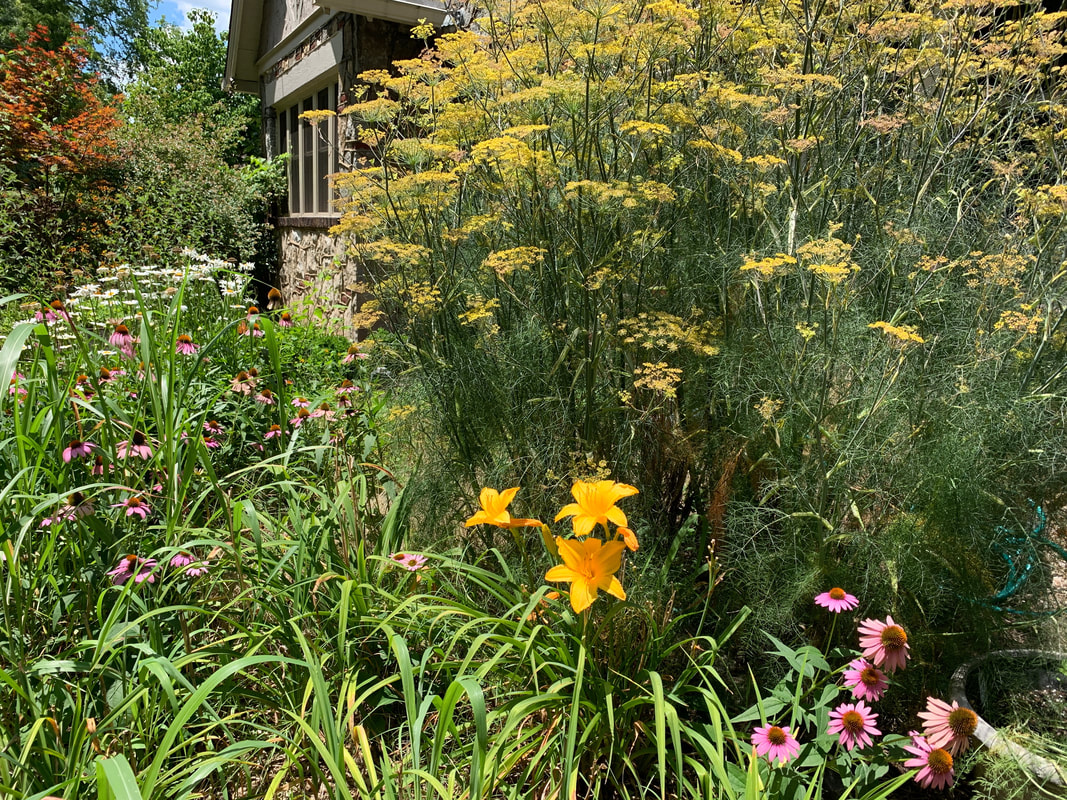describing (my) garden design
“Cottage Garden” is a polite way to name my front beds . . . Calling them “natural” hides one’s reproach . . . and “chaotic” is also not too biting . . . and commiserations about how humid it has been, . . . how this summer’s chiggers have been so especially vicious, . . . and, oh, how little time we have in late summer . . . these are, indeed and truly, most gracious ways to tell me my gardens are a mess. . . .
|
Some eclectic gardens happen due insufficient knowledge, limited experience, and unripened taste, &/or as a reactionary temper tantrum, spinning out to a grab bag of anything and everything other than the monotony of whatever prevailing trend has long surrounded one.* My eclecticism was a variant of these root conditions: more due a hoarder’s weakness alongside an insecurity to prune or remove what was thriving and a nursemaid’s diligence to resuscitate the dying, all on a foundation of rapacious curiosity, excessive childlike delight in disregarded specimens and unexpected pairings—but “eclectic” all the same. As this most politely apt descriptor sums up my front garden, it, too, interests the philosopher in me. ...
|
* Rebellion against what has been is well captured by William Robinson’s preface to his revolutionary The Wild Garden:
“When I began, some years ago, to plead the cause of the innumerable hardy flowers against the few tender ones, put out at that time in a formal way, the answer frequently was, ‘We cannot go back to the mixed border’—that is to say, the old way of arranging flowers in borders. Knowing, then, a little of the vast world of plant beauty quite shut out of our gardens by the ‘system,’ in vogue, I was led to consider the ways in which it might be introduced to our gardens; and, among various ideas that then occurred to me, was the name and scope of the ‘wild garden’” (William Robinson, The Wild Garden, third edition, (London: John Murray, Albemarle Street, 1883), v-vi). |
Site powered by Weebly. Managed by MacHighway

